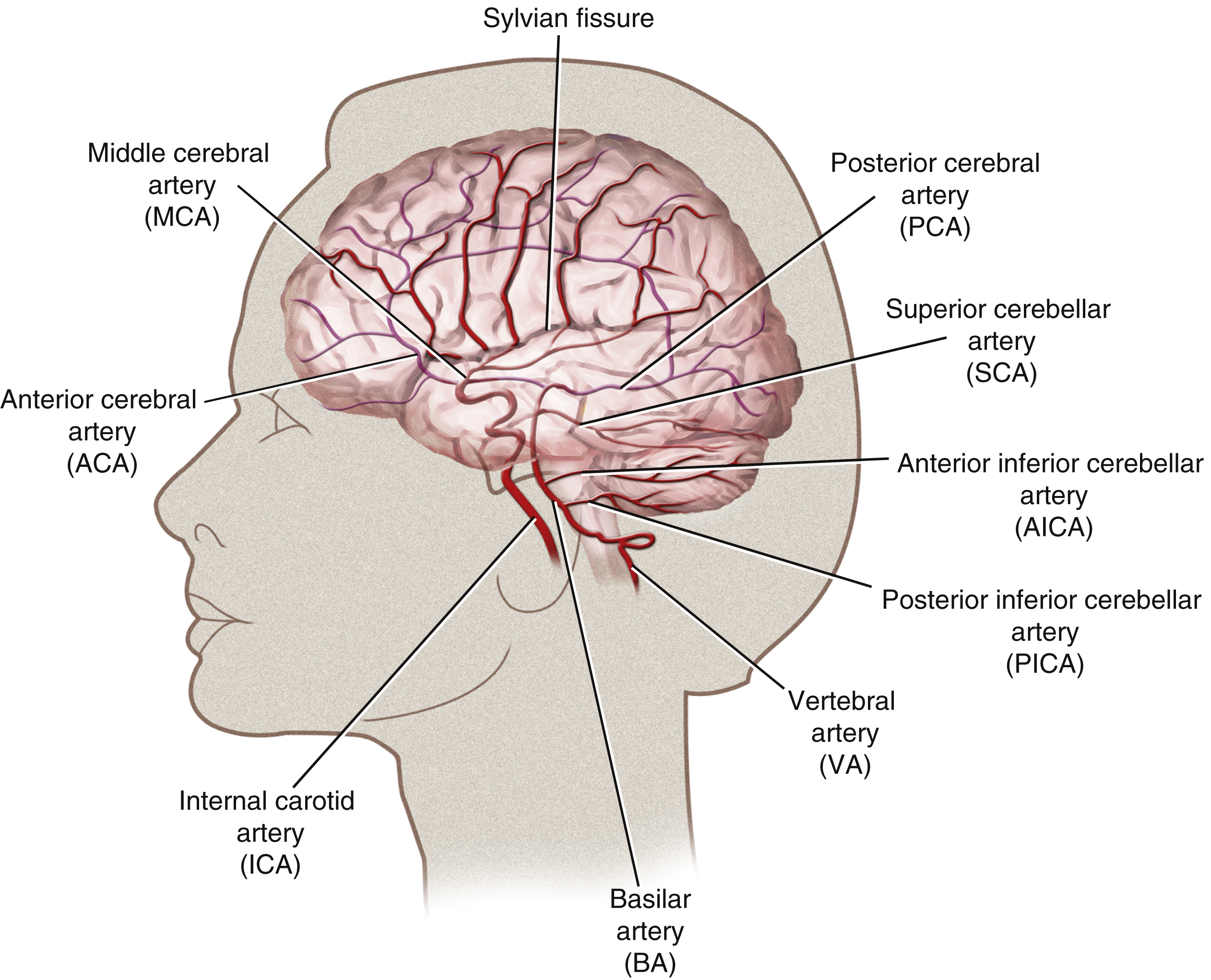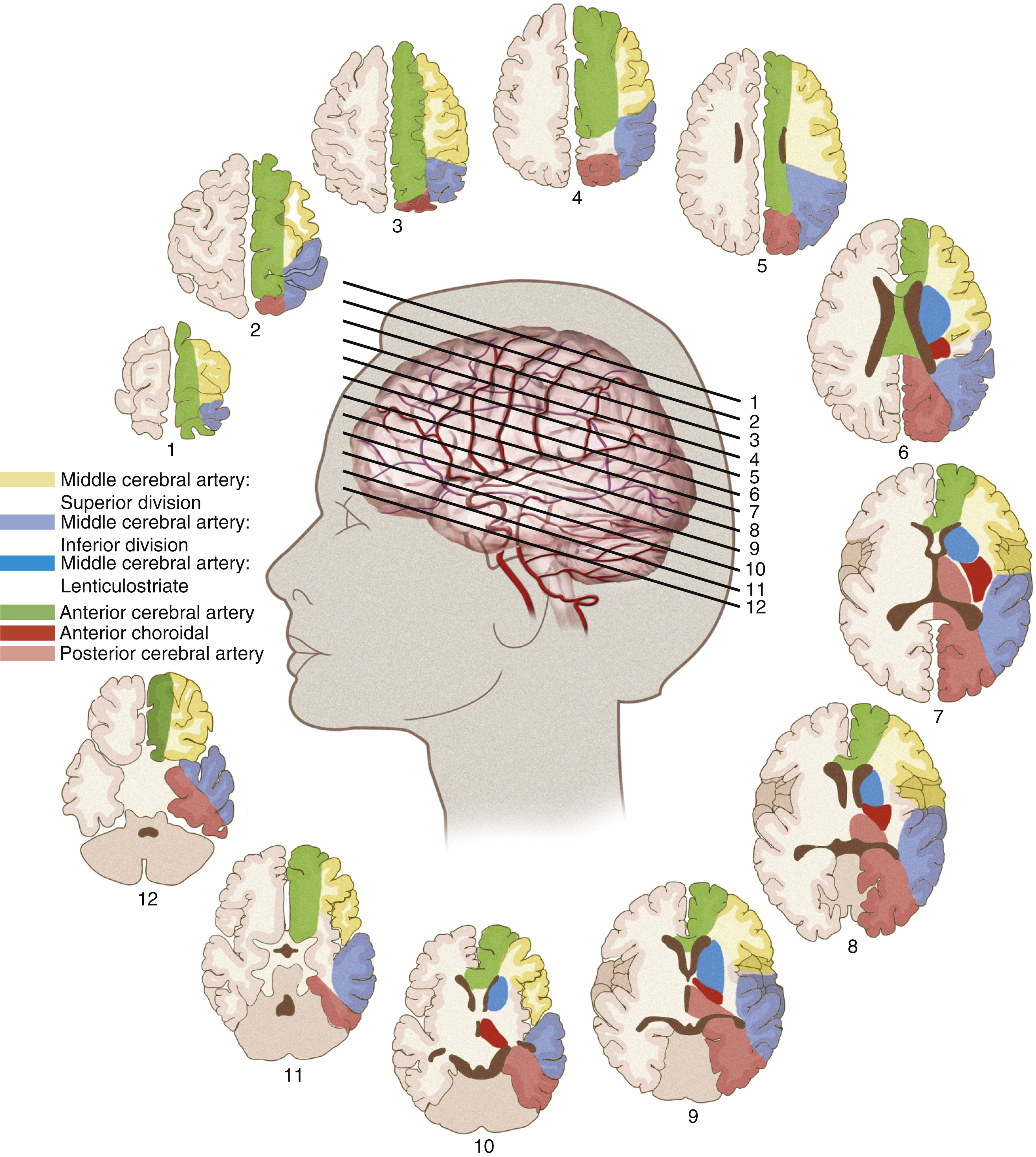Physical Address
304 North Cardinal St.
Dorchester Center, MA 02124
The role of interventional neuroradiology has expanded in the past decades as the safety of cerebral angiogram has improved. Not only is the use of diagnostic angiography increasing, the role of intervention in neurologic injury has increased dramatically as well. Angiography is not solely a means of diagnosis; an increasing number of interventions are now being used to treat injuries such as acute stroke, intracranial stenosis, cerebral aneurysms, and cerebral vasospasm through a variety of modalities including intraarterial medications, stents, and embolizations. Even though the safety of cerebral angiography and neurointerventional procedures has improved, the most common neurologic complication remains stroke. This chapter is designed to serve as a primer in clinical neurologic examination.
The literature reports various rates of complications from 0% to 28% ; however, the technology for cerebral angiography has gone through extensive improvement over the course of this time. Dion et al. found that in patients undergoing cerebral angiography for any cause, within the first 24 hours there was a 1.3% neurologic complication rate. In the ischemic stroke/transient ischemic attack population there was a 4% neurologic complication rate, with 1% of those deficits being permanent. Additionally, 23% of patients undergoing cerebral angiography were found to have silent infarctions on diffusion weighted imaging. This is important when considering the overall disease burden a patient will accumulate.
The expanding role of the neurointerventionalist in the realm of diagnosis and treatment of patients with acute neurologic diseases requires that he or she have the ability to perform a rapid and comprehensive neurologic assessment. All interventional radiologists are proficient at examination of the cerebrovascular system and any abnormalities therein. However, many are not versed in the most basic of neurologic exams to evaluate for complications arising from these procedures. Early detection of strokes can lead to rapid intervention and possible reversal of symptoms. The purpose of this chapter is twofold: to introduce a rapid neurologic examination that can be done by the interventionalist during and after the procedure to detect strokes, and to assist the interventionalist in learning how to proceed in the event that a cerebrovascular event is suggested.
Knowledge of cerebral circulation at a physical and functional anatomic level is essential to the practitioner, whether performing a two- or four-vessel cerebral angiogram. It is critical to understand the flow of blood upstream from the location of injury. Knowledge of the functions of each of the cerebral hemispheres is essential in understanding the presenting symptoms and localizing the sites of any neurologic damage. Here we discuss the neurovascular anatomy and functional neuroanatomy to make the reasons behind the focused neurologic examination more clear.
The anterior circulation is derived from the internal carotid arteries. The primary branches are the anterior cerebral artery (ACA) and the middle cerebral artery (MCA). The ACA supplies most of the anterior medial surface of the brain’s cortex. The MCA divides into three major branches. The superior division supplies the frontal lobe cortex above the sylvian fissure and the perirolandic cortex. The MCA inferior division supplies the temporal and parietal lobe cortex behind the sylvian fissure. The MCA territory supplies most of the cortex on the dorsolateral convexity of the brain ( Fig. 59.1 ).

The posterior circulation is derived from the vertebral arteries, which merge into the basilar artery and then form the posterior cerebral arteries (PCAs). The vertebral arteries are divided into four segments, of which the fourth segment is completely intracranial. The two vertebral arteries merge into the basilar artery at the pontomedullary junction. The basilar artery travels up to the pontomesencephalic junction, where it splits to form the PCAs. The basilar artery feeds the pons and midbrain through small perforator arteries. The PCA feeds the medial occipital cortex and medial temporal lobe. The vertebral arteries feed the cerebellum, specifically the posterior inferior cerebellar arteries, and the basilar artery gives rise to the anterior inferior cerebellar arteries and the superior cerebellar arteries ( Fig. 59.2 ).

The cerebral hemispheres are each divided into four lobes. The frontal, parietal, temporal, and occipital lobes are each responsible for distinct functions. The frontal lobe directs eye movements, motor speech, and orientation. The parietal lobe controls speech and sensation. The temporal lobe is responsible for speech, and the occipital lobe is the primary visual center ( Fig. 59.3 ).

The ACA supplies blood to the anterior frontal lobes and the superior parietal lobes. The superior MCA supplies the lateral portion of the frontal lobe. The inferior division supplies the lateral temporal lobe and a section of the parietal lobe. The PCA feeds the inferior and medial temporal lobe as well as the occipital lobe. The left and right sides of the brain are each responsible for different functions.
Given the different roles of the right and left MCA territories, we discuss right and left MCA stroke syndromes separately. It is useful to bear in mind that all the discussion regarding aphasias in left MCA strokes are applicable in right-handed people; left-handed people may have their language centers in right MCA territory. Additionally, right MCA territory strokes may be much less apparent on a basic neurologic exam if there is no accompanying weakness because they tend to present as “neglects.” The MCA divides into the superior, inferior, and deep territory branches.
Left MCA strokes that affect the superior division cause right-sided face and arm weakness and an expressive or nonfluent aphasia; occasionally the inability to move both eyes toward the weak side is also present. In right-handed people, Broca aphasia presents as an inability to speak or express language well, but with understanding intact. This is also true of written speech. A severe dysarthria and aphasia can be differentiated by the aphasic patient’s inability to write. A person with severe dysarthria secondary to facial weakness will be able to read and write normally.
Left MCA inferior division strokes cause fluent aphasia, sensory loss on the same side, and a right visual field defect. In right-handed people, the fluent aphasic or receptive aphasic will speak fluent gibberish, making little sense. The basic lesion is one of comprehension. They are unable to “receive” information through speech. Therefore, if asked to perform a command or follow an instruction, they will be unable to understand. Such patients cannot be asked for consent for procedures. Never ask the patient to imitate when trying to determine a patient’s ability to comprehend spoken language; this does not test language function. The visual problems will manifest as an inability to see objects on one side or another. It is important to remember that patients will often not realize they are unable to see or attend to one side. A visual field cut is usually found on examination and not found as a result of a patient complaint.
Strokes affecting the deep territory cause a motor weakness (hemiparesis) involving the face, arm, and leg all on the same side. In the event the proximal left MCA is occluded, a patient will develop a stroke involving all three branches. This syndrome will combine all the symptoms with a right hemiplegia, hemianesthesia, homonymous hemianopia, and global aphasia (receptive and expressive) with a left gaze preference ( Table 59.1 ).
| Artery | Lobe | Sign |
|---|---|---|
| Right ACA | Frontal, parietal | Left leg weakness |
| Right MCA, superior division | Frontal, parietal | Left arm/face weakness, hemineglect |
| Right MCA, inferior division | Temporal, parietal | Profound hemineglect, right gaze preference |
| Right PCA | Temporal, occipital | Left homonymous hemianopia |
| Left ACA | Frontal, parietal | Right leg weakness |
| Left MCA, superior division | Frontal, parietal | Right face/arm weakness, nonfluent aphasia |
| Left MCA, inferior division | Temporal, parietal | Fluent aphasia, right visual field cut |
| Left PCA | Temporal, occipital | Right homonymous hemianopia |
Become a Clinical Tree membership for Full access and enjoy Unlimited articles
If you are a member. Log in here